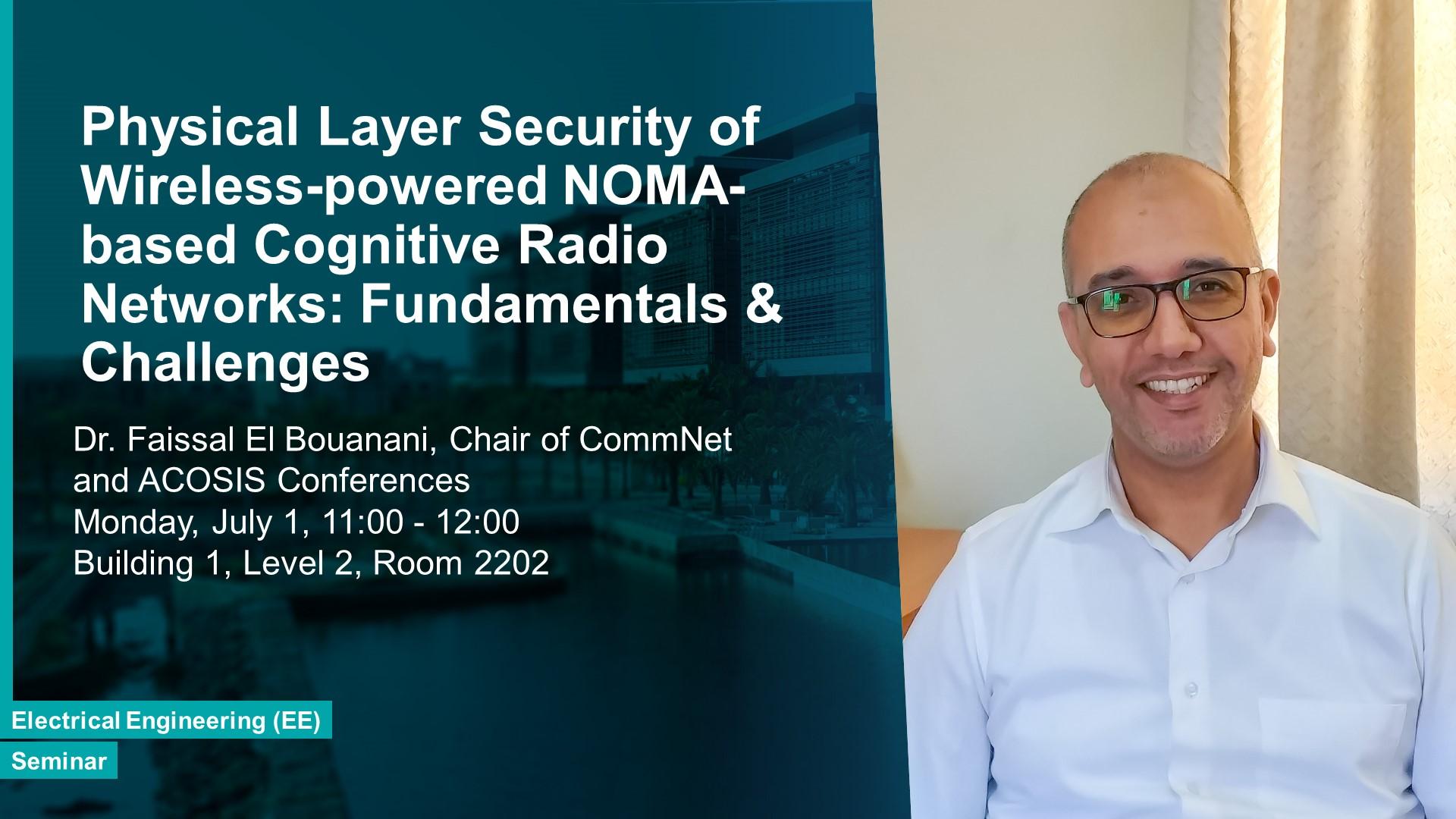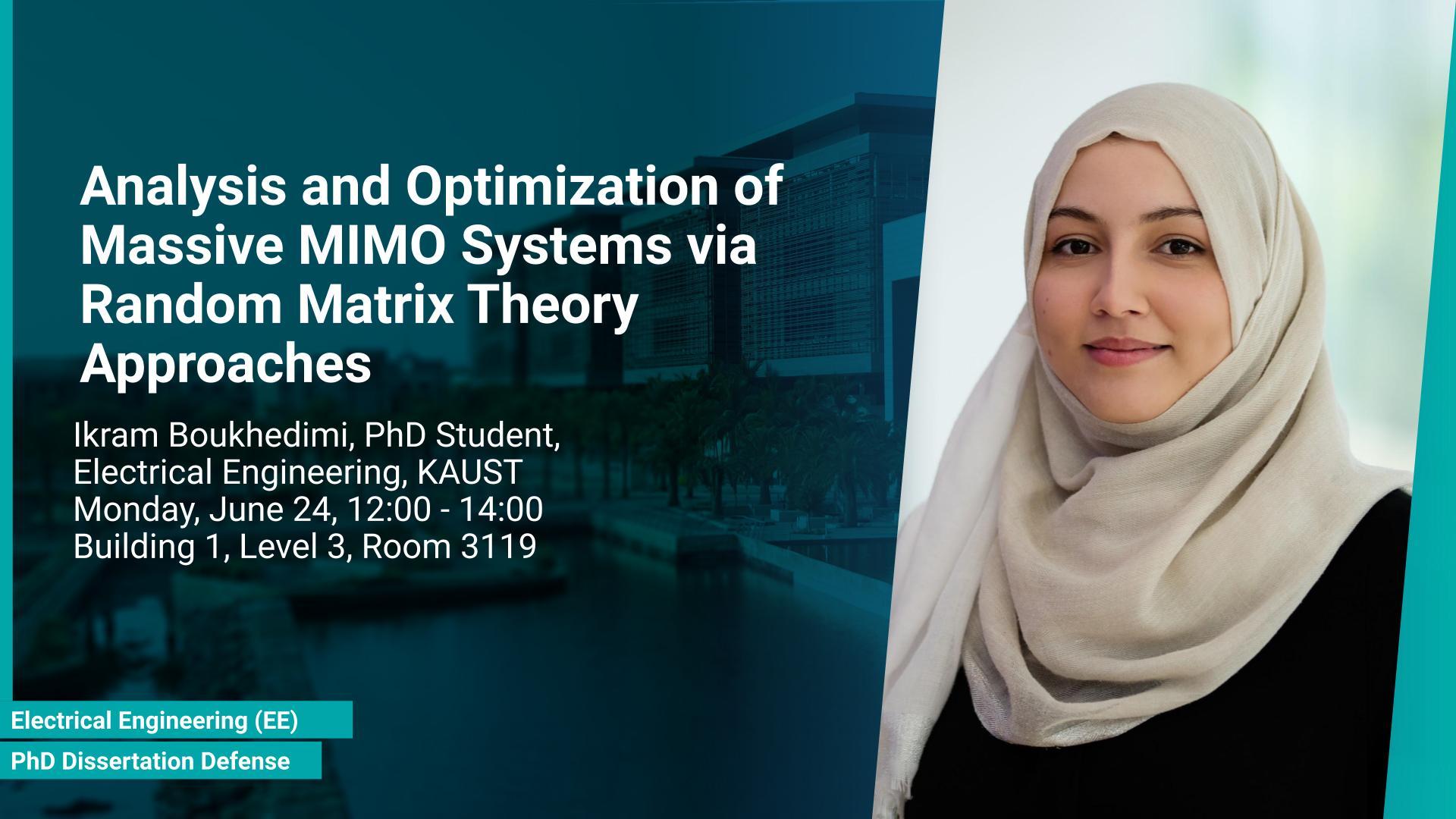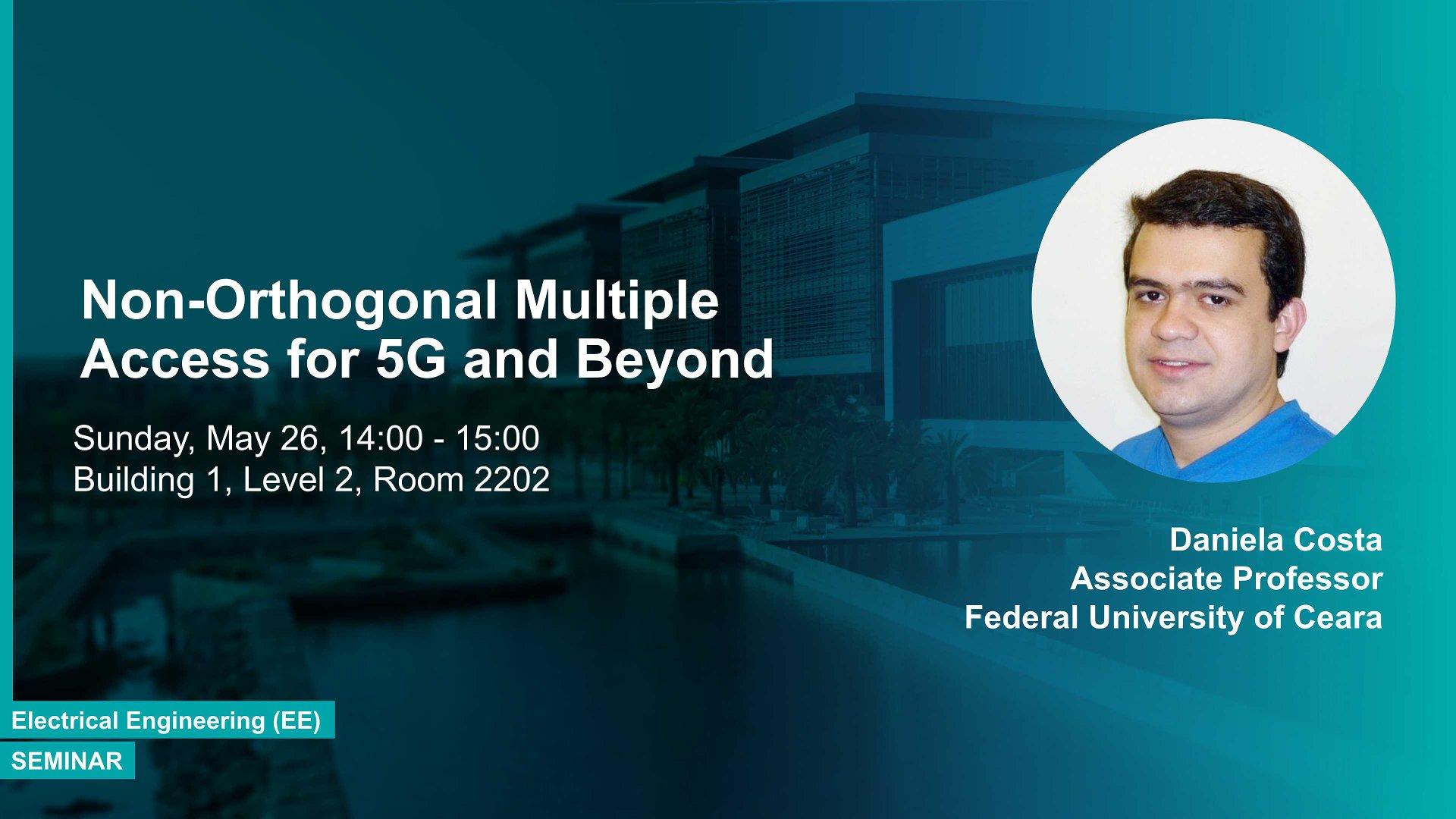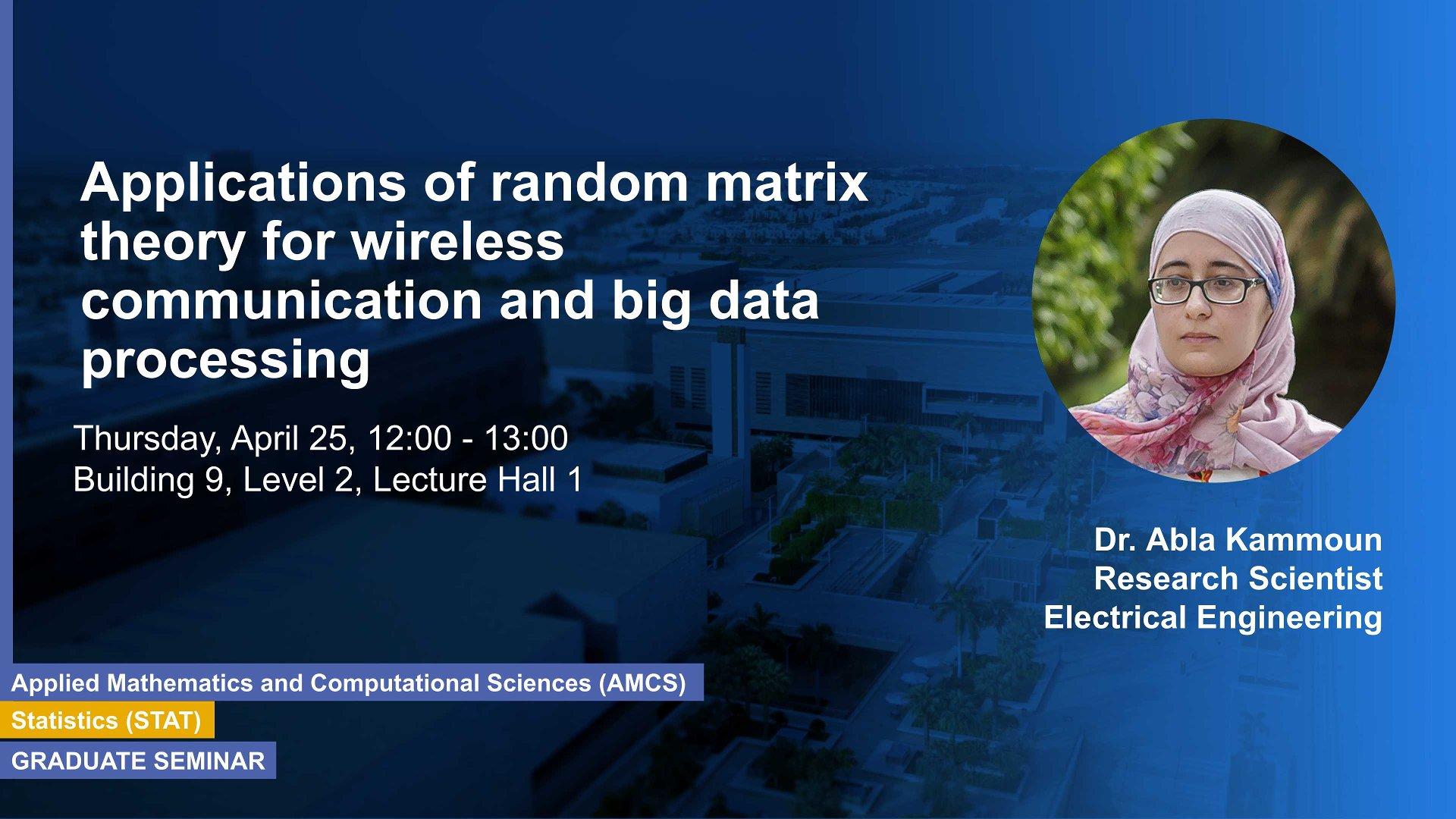Dr. Faissal El Bouanani, Chair of CommNet and ACOSIS conferences
Monday, July 01, 2019, 11:00
- 12:00
B1, L2, R2202
Contact Person
Abstract
In the last decade, with the emergence of the internet of things (IoT) as well as machine
PhD Degree,
Electrical and Computer Engineering
Monday, June 24, 2019, 12:00
- 14:00
Building 1, Level 3, Room 3119
Contact Person
Massive multiple-input multiple-output (MIMO) is a key enabling technology to achieve the required spectral and energy efficiency of the next generation of wireless networks. By endowing the base station (BS) with hundreds of antennas and relying on spatial multiplexing, massive MIMO allows impressive advantages in many fronts. To reduce this promising technology to reality, thorough performance analysis has to be conducted. Along this line, this work is focused on the convenient high-dimensionality of massive MIMO’s corresponding model. Indeed, the large number of antennas allows us to harness asymptotic results from Random Matrix Theory to provide accurate approximations of the main performance metrics. The derivations yield simple closed-form expressions that can be easily interpreted and manipulated in contrast to their alternative random equivalents. Accordingly, in this dissertation, we investigate massive MIMO in different contexts.
Prof. Daniel Costa , Federal University of Ceará
Sunday, May 26, 2019, 14:00
- 15:00
B1, L2, R2202
Contact Person
Non-orthogonal multiple access (NOMA) has recently emerged not only as a new design of multiple access techniques in cellular networks, but also as a general principle of network architecture for applications beyond cellular systems. This talk will present and discuss the fundamentals of NOMA, and examine how it can be combined with other emerging communication technologies. Some new research trends and challenges will also be discussed.
Senior Research Scientist,
Electrical and Computer Engineering
Thursday, April 25, 2019, 12:00
- 13:00
B9 L2 Lecture Hall 1
Contact Person
Since the pioneer works of Telatar, random matrix theory has found a variety of applications in engineering disciplines that, to name a few, include wireless communication and signal processing. Its scope is now going far beyond the field of mathematics, being recognized as an indispensable tool for advanced research in engineering disciplines as can be evidenced by the dramatic increase in related publications. Recently, random matrix theory has found its way into the field of big data processing, allowing accurate characterization of the performance of many algorithms met in the field of machine learning.
Professor Tarek Al-bawab, Jackson State University
Wednesday, December 19, 2018, 14:00
- 16:00
Building 1, Room: 3-119
Contact Person
Abstract: Network Engineering as Distinct Academic Discipline Beyond th




